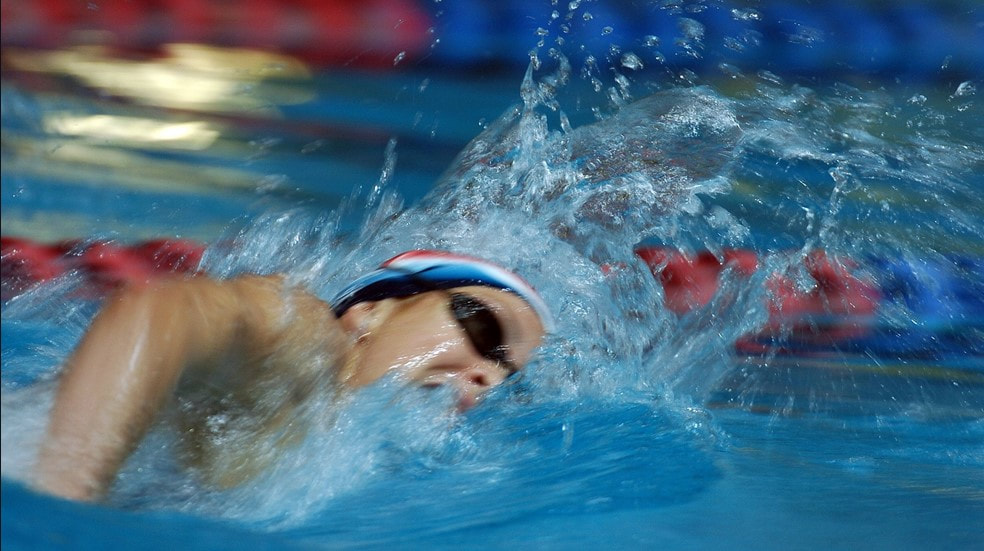|
Are you finding it difficult to increase your speed in the water? Are you looking to combine some speed swimming training with your current endurance workouts? Do you find that you are not moving any faster in the pool or in your triathlon no matter how hard you try? Then let’s look at some tips on speed and sprint training that we can show you during our lessons. How to train for sprint swimming? Sprint swim training can be gruelling and exhausting, but having a good coach taking you through the best way to develop these steps will lead to you increasing your power and speed in the water (even over longer distances). Developing your stroke and technique are obviously vital in improving performance and overall speed in the water, but what are the main elements that you should be looking for when aiming at ‘speed work’ in the pool? Breathing during sprint swimming Breath-holding (otherwise known as hypoxic work) is part of swimming at top speed. This method includes limiting the number of breaths per length or over a given distance. Some swimmers hold their breath for the entire length of the pool, whilst others breathe once per length, or equally novice swimmers may start with taking a breath every five arm strokes. All these techniques will develop your breath holding ability. During sprinting, it is imperative that a swimmer acclimatises to swimming at maximum effort and the breathing demands that such effort entails. The ability to hold your breath during speed swim training can be developed more and more over time. When performing sprint freestyle or butterfly swimming, a single breath will interrupt the power, acceleration and flow of the stroke, hence why we see Olympic 50 metre sprinters not turning for a breath at all when racing. Stroke rate and length When performing sprint and speed sets, always try and increase your stroke rate (number of strokes per length) but maintain your stroke length at the same time. If you can increase your stroke rate without shortening your stroke length, you will inevitably swim faster. Develop a strong kick Swimming faster not only requires the arms to increase in speed but also the leg kick at the same to time (on any of the four strokes). The timing of the legs to the arms also needs to be maintained no matter if you are swimming at 60% effort or maximum effort. Using fins during sprint training can also benefit a fast and powerful leg kick. Recruiting fast twitch fibres Performing short, sharp sprints in the water over very short distances will develop fast twitch fibres in the muscle. Such fibres are needed for better sprinting and you can change your physiology and biochemistry with speed work in the pool. As a distance swimmer or triathlete, this recruitment of fast twitch fibres can be developed over time and you will see a difference in your sprinting ability in both training and in racing. When to perform sprinting and speed work Learning how it feels to swim fast is important, however, this does not mean that sprint swimming should be done during every workout. Depending on experience of this kind of training, we would not recommend sprint training every day but limit it to 3 times per week (please talk with your coach and we can advise you more). On the whole, sprint training is performed at a higher intensity than distance training. Swimming at race pace can quickly lead to a spike in your heart rate and the build up of lactic acid in your muscles. The ability to delay the onset of lactic acid can be achieved with regular sprint (speed) work in the pool. With practice, you will see yourself your sprint training move to entirely different level. |
AUTHORPaul started competing in swimming from the age of 8 and eventually went on to represent his country all over the world. During his time at University, Paul specialised in Aquatics and the Biomechanics of Swimming and produced numerous theses on swimming performance. TOPICS
All
ARCHIVES
June 2024
|
Let's connect!
Copyright © 2024 Strictly Swimming


